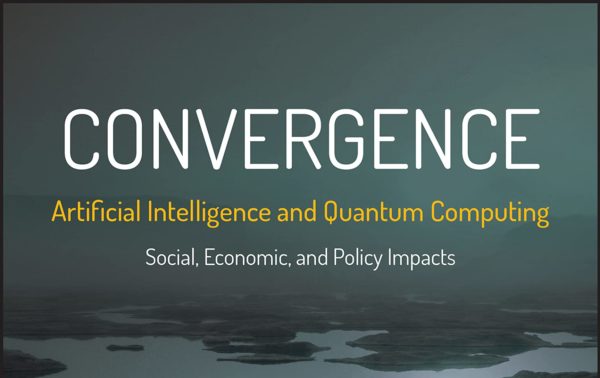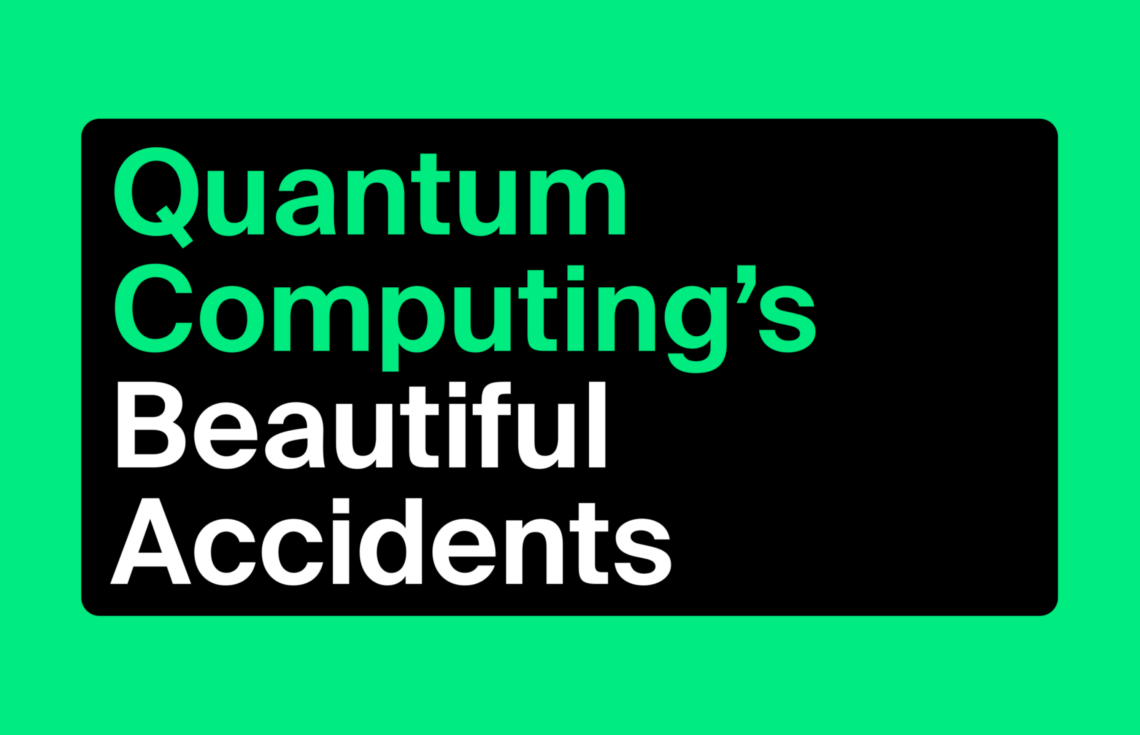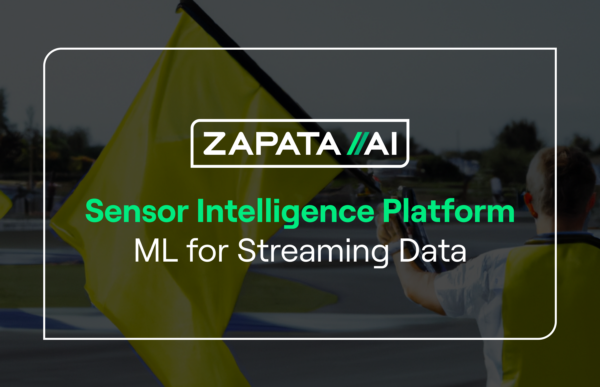Quantum Computing’s Beautiful Accidents
By Christopher Savoie, CEO and Co-founder of Zapata Computing
This essay was republished from the book Convergence: Artificial Intelligence and Quantum Computing: Social, Economic, and Policy Impacts with permission. The book is a collection of essays from 20 renowned, international authors working in industry, academia, and government that explains the impending convergence of artificial intelligence and quantum computing

“Beauty is the ultimate defense against complexity.”
—David Gelernter
On an early November day in 1895, Wilhelm Röntgen, professor of Physics in Wurzburg, Bavaria, altered the future of medicine for the better. But not because of what he originally set out to do. In fact, what he actually discovered did not match what he wanted to discover.
While ascertaining whether cathode rays could pass through glass, he noticed an incandescent green light seeping through the black paper-covered tube and projecting onto a fluorescent screen. Intrigued, he continued experimenting to learn more about this strange green light. He eventually found that it could pass through different substances and leave behind visible shadows of solid objects, including human bones. Not knowing what they were, Röntgen called them X-rays. These discoveries eventually changed all of medicine in a profoundly positive—albeit negligently arrived at—way.
I couldn’t help but think of Röntgen’s breakthrough when the opportunity to be part of this book came along. The discovery of X-rays is only one example of a trend I like to call negligently positive outcomes. Penicillin, Velcro, vulcanized rubber, and insulin are a few other well-known cases of this phenomenon. And, depending on your age, you can throw computers begetting a thriving global gaming industry into the mix. As a scientist myself, I contemplated that this will inevitably be the case for quantum computing as well when, together with five other scientists, we set out to found a quantum computing software company. Indeed, this process of unintentional invention is an intrinsic and vital aspect to technological and scientific innovation. Frankly, the world is so complex that it’s impossible to truly know all the unintentional consequences of quite intentional actions, big and small.
Complexity is all relative, of course. Finding your way through Boston as a tourist without a map or GPS guide is one level of complexity (and not a small one!). Figuring out how to take advantage of quantum computing’s power to speed up drug discovery is at another level altogether.
Every day people around the world attempt complex undertakings to varying degrees of success. In the course of navigating this complexity, they negligently generate both positive and negative outcomes as a result. The difference with quantum computing is that the technology is exponential by its nature and brings a—excuse the intentional pun—quantum leap in technological capabilities that even the experts do not fully understand the limits of. Quantum computation has the great potential to revolutionize business and life in myriad ways, and at a level that civilization has yet to experience. So, yes, a negligent outcome could be life-altering on a massive scale (not that getting lost in Boston’s maze of winding one-way streets isn’t a life-altering, albeit common, negative event in the current pre-quantum era).
Unlocking Human and Business Value, One Way or the Other
In the next decade—even the next several years—we will likely see quantum computing’s impact unfold first in the fields of artificial intelligence (AI) and machine learning (ML). The advantages will manifest themselves in how we optimize our resources, in how we grow our food, in how we predict complex events like climate change and the spread of pandemics. Such systems are obviously too complex to model by the human mind. Alas, they are beyond the scope of accurate prediction by even the most advanced classical supercomputers currently available, even with the tremendous strides we have made of late in machine learning and artificial intelligence. Case in point, the COVID-19 pandemic—what would the world not have given to have more accurate models of the epidemiology and spread of this virus as the pandemic unfolded. Many unfortunate policy decisions were made due to the lack of accurate scientific models of viral spread and models of disruption in global supply chains and the economy that ensued. Good policy can be made only with good data and accurate models. In relatively short order, quantum computing will deliver modeling of complex systems that has been, until now, beyond the reach of our most advanced technologies.
In the pursuit of these outcomes, my colleagues and I intend to build quantum computing applications that generate positive outcomes and unlock a huge amount of human and business value. The key word here is intend. While we have already begun to apply quantum computing to create intentional positive outcomes—such as in financial portfolio optimization, chemical modeling for drug discovery, and generative adversarial networks (GANs) that have the capability of creating accurate synthetic data beyond the capabilities of classical computers—additional negligently positive outcomes will also be generated along the way that nobody today could possibly foresee.
I would be remiss if I didn’t mention that, as with any emergent technology, some negative outcomes are also possible with quantum computing. Whether intentional (e.g., breaking encryption) or negligent and unintentional (e.g., new privacy concerns brought about by a capability to accurately predict human behavior, perhaps such as was foreseen by the popular TV drama Person of Interest), negligent outcomes tend to be a double-edged sword.
There is no need to overly obsess on dystopian outcomes, but others certainly have crossed into the territory of cautionary hysteria. This is why my colleagues and I strongly believe that quantum computing needs governance and guidance. The same can be said of AI and machine learning, and there are, fortunately, organizations and individuals pursuing this path. For example, recently some fellow attorney colleagues and I, under the auspices of the American Bar Association, formed a task force to explore the societal, legal, and policy implications of quantum computing as it emerges as a force of societal change.
I am a career entrepreneur at heart and therefore an optimist by nature and as such am personally drawn much more to the negligently positive outcomes since they are perhaps the most beautiful and inspiring. That’s why the potential of quantum computing is so tantalizing. By using quantum thinking to rewire how we think about problems in a more abundant, probabilistic, scenario-driven way, we will create negligently positive outcomes we could not have anticipated otherwise.
But first things first.
Quantum as a Force Multiplier for AI
Though quantum computing continues to evolve, the actual devices are not yet faster than their classical counterparts. In fact, if you saw one of them, it would probably remind you of a giant, futuristic train set—a supercooled, near-zero degrees Kelvin one, that is. Some say it reminds them of the beginning of modern computing as exemplified by the room-sized ENIAC machine.
Depending on who you’re talking to, quantum computing won’t come into its own until there’s a large-scale, fault-tolerant computer. Is that five years from now? Ten? More? It’s impossible to say. But I would counter that argument by pointing to the existing and growing quantum ecosystem that is producing functioning hardware, software, and algorithms today.
It’s also important to mention that quantum devices and classical devices don’t just solve problems differently; they solve different problems. And this will continue to be true in the years and even decades ahead. That’s why it’s not accurate to heap any quantum-related accolades on just quantum computers. The reality is that breakthroughs and disruptions will be the product of the combined power of classical and quantum computers working together in a hybrid architecture and “conducted” with workflow orchestration tools to solve problems.
The important takeaway here is that quantum’s main role will be as a force multiplier to existing AI and machine learning solutions. For example, instead of just deep faking a celebrity video as you can do now, adding quantum to the mix could mean deep faking how lung cancer might spread in an individual based on their genetic profile and numerous other factors.
In fact, we have already entered a regime in which quantum devices, in certain, extreme edge case circumstances, can outperform their classical counterparts. This is referred to as quantum supremacy. These achievements are not yet scalable or practical for solving everyday useful problems, but future progress will eventually get us there, and the path to get there is already laid out before us.
In the meantime, there is a vibrant and growing ecosystem of government, academic, and business stakeholders—oftentimes working collaboratively—that is laying the groundwork for quantum’s inevitable disruption of the status quo. Some of the industries that are expected to experience this disruption early include pharmaceuticals, healthcare, financial services, material science, logistics, cybersecurity, aerospace, and energy.
It’s All Connected
“When we try to pick out anything by itself, we find it hitched to everything else in the universe.”
—John Muir
One of the features of the potential of quantum computing that is particularly enticing is how it has the potential to leverage the interconnectedness of so many variables and problems in consequential ways. Climate change, for example, does not take place in a vacuum. It directly impacts food security, which in turn impacts global trade, business (name any industry), economies, health, epidemiology, and social unrest, and this creates an added meta-dimensionality to how we compute predictive models. Quantum computing will give us the computing horsepower to address the dimensionality of this interconnectedness of myriad variables in intertwined complex systems.
While, as mentioned previously, quantum computing can—and will—be used by those with malicious intent, such as cybercriminals, the bulk of the intentional use cases, research, and work will go toward the betterment of society. Drug and vaccine development will speed up as molecules and biological systems are simulated in ways not possible today. Climate change models will be many levels beyond what we can generate today. Materials that don’t exist now will be simulated and brought into existence. Investment portfolios will be optimized to an extent that all financial institutions dream of but currently cannot achieve. Hardware and software vendors will build and run their products in ways that are currently beyond the realm of imagination.
These are just a few examples of what we can expect to see in the years to come and are limited by what we can currently imagine and foresee, which represents just the tip of the possible outcome iceberg. We’re unfortunately but inevitably bound to an orthodoxy that constrains our thinking. However, just as the advent of classical computers has fundamentally and forever changed our way of addressing problems, one consequence of using quantum computing will inevitably be to fundamentally require us to think about problems in a more probabilistic and scenario-driven way. This will be paradigm-changing for all of humanity on a foundational level—a truly seismic shift in capabilities and thinking. And this is one of the main motivations for founding a company to enable and participate in the creation of such a future.
Thinking Differently
Back in the late 1990s, Apple ran a now-legendary ad campaign built around the message “Think Different.” It featured that tagline supported by pictures and videos of transformational individuals such as Albert Einstein, Thomas Edison, and Martin Luther King, Jr. In a way, that is what quantum computing is soon going to help us do.
The “known unknown” with quantum computing is how it will help us look at things differently to come up with ideas—and the ability to process and compute them—that humans either couldn’t conceive of or were too stuck in old, orthodox thinking to change. Think of the binary foundation of computing that consists of bits that can only be a one or a zero. Now, with the quantum model, computers can operate in a nonbinary mode because the quantum bits (called qubits) exist in what’s called superposition, meaning they are in a state of limbo that is neither one nor zero, but rather an indeterminate, probabilistic mix of both “one-ness” and “zero-ness” until a quantum calculation is finally measured at the end.
Because of this quantum state, qubits can compute much more information and perform calculations exponentially faster than classical bits. It is not just better and bigger and faster. It is a fundamentally different way of processing the same information that changes the way we even formulate the problems that need to be solved. This forces the problem-solver to rethink the problem in new ways that add diversity in thinking at a fundamental level. Just as diversity of backgrounds and perspective confers advantages to human organizations, this diversity of thought in the problem-solving space will confer unique advantages in seeking outcomes and solutions to our most difficult and vexing problems.
This is the beautiful aspect of quantum computing: the as-yet-unknown possibilities that will manifest as negligently positive outcomes. The beautiful accidents. By definition, I cannot predict what they will be, nor can anyone else. But they are out there waiting to be born. I can’t wait to see how this plays out!




